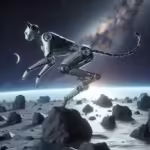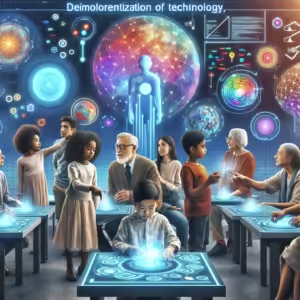Revolutionizing Space Exploration with Robotics
Space exploration has always been a domain of cutting-edge technology and innovation. With the vast expanse of our universe being mostly uncharted territory, researchers and engineers are perpetually seeking groundbreaking methods to explore and understand the cosmos. One of the latest advancements in this exciting field is the development of a robot that mimics the jumping and landing capabilities of a cat, aimed at exploring asteroids and other celestial bodies.
Why Jumping Robots Matter in Space Exploration
The challenges faced by traditional rovers and landers in space exploration are well-documented. They are typically designed to traverse surfaces in a linear fashion, which can be a disadvantage on rocky and uneven terrains, such as those found on asteroids. This limitation can hinder their ability to collect valuable data from regions that aren’t easily accessible.
Jumping robots, however, offer a unique solution. By emulating the agile movements of a cat, these robots can:
Asteroids, with their low gravity and unpredictable surface features, present a unique opportunity and challenge for robotic explorers. The cat-like jumping and landing ability of these robots could open new frontiers in how we study and understand these celestial bodies.
How Do These Cat-Like Robots Work?
The design of this innovative robot is inspired by the natural biomechanics of feline motion. Cats are renowned for their agile movements, thanks to their strong hind legs and flexible spinal structures. Here’s how the robot mimics these characteristics:
Powerful Jumping Mechanism
The jumping ability of the robot is powered by a compact and efficient system, closely resembling the tendon and muscle structure found in cats. This allows the robot to leap over obstacles or gaps, much like how a cat would traverse diverse terrains.
Controlled Landing Technology
A critical feature is the robot’s ability to land smoothly. Cats have an innate ability to right themselves during a fall and absorb impact using their muscular and flexible bodies. The robot incorporates a sophisticated landing system that adjusts its posture mid-air for a soft and precise touchdown. This technology reduces the risk of damage during harsh landings, ensuring the robot remains operational over extended missions.
Incorporating these feline-inspired designs not only improves the robot’s efficiency but also enhances its safety and reliability on various missions.
Potential Applications Beyond Asteroids
While the primary focus is on asteroid exploration, the versatility of this technology extends far beyond. The jumping robot could also play a significant role in:
By branching out beyond asteroids, these robots could become invaluable assets in myriad scientific and exploratory missions throughout the solar system.
The Future of Robotic Space Exploration
The introduction of cat-like jumping robots marks a pivotal moment in the field of space technology. Their potential to revolutionize space exploration lies not only in their innovative design but also in the data they can potentially gather. With these advanced capabilities, we are likely to see:
The possibilities unlocked by this technology are vast and promising. As we continue to push the boundaries of what is possible in space exploration, innovations like the cat-like jumping robots will undoubtedly play a crucial role.
Conclusion
Advancements in robotics are continuously transforming how we approach space exploration. The cat-like jumping robot stands as a testament to our ingenuity and our commitment to exploring the unknown. By marrying technology with inspiration from nature, we are not only enhancing our capability to explore space more effectively but also paving the way for future discoveries that could reshape our understanding of the universe.
In light of these developments, the future of space exploration looks brighter and more dynamic than ever before. As these robots begin their journeys across the vastness of space, they carry with them the promise of new insights and a deeper connection to the cosmos.








